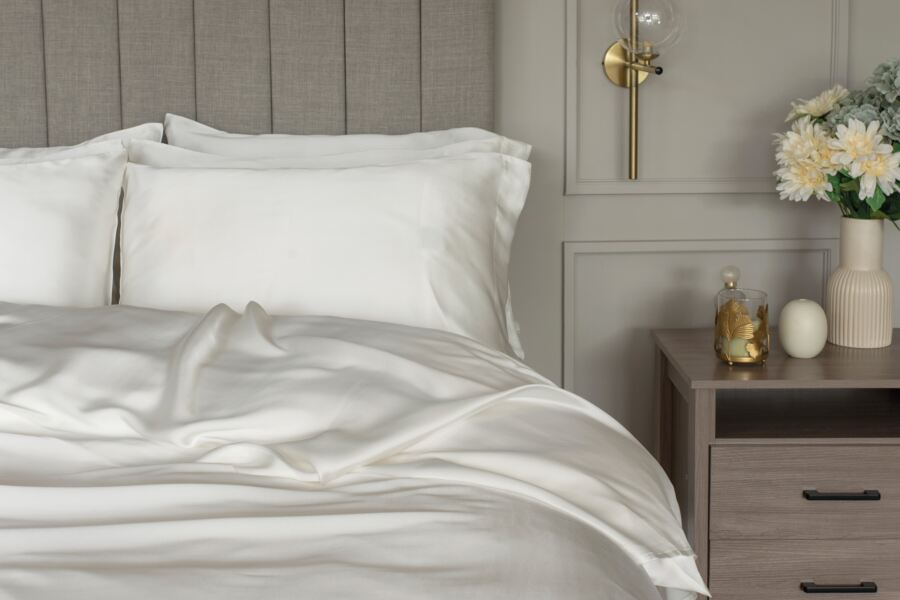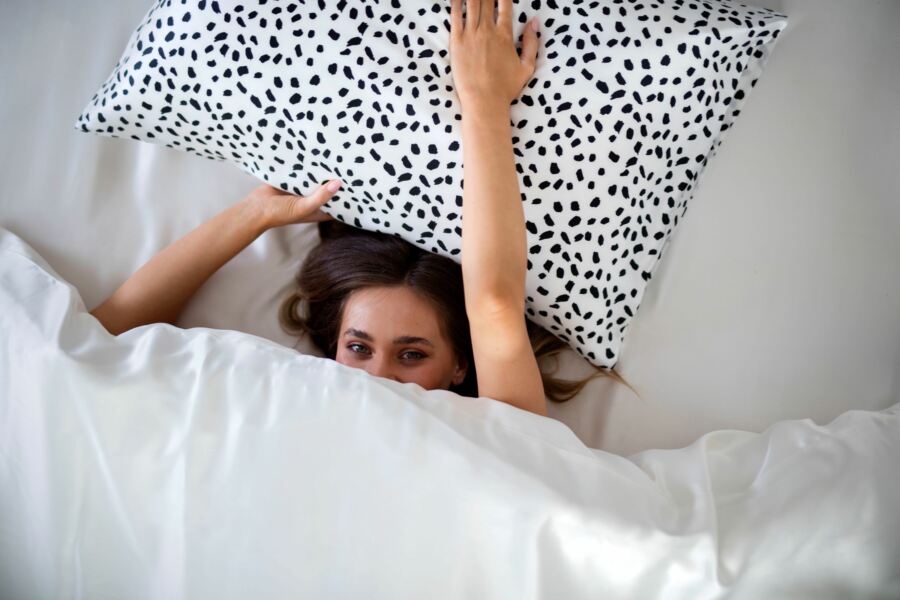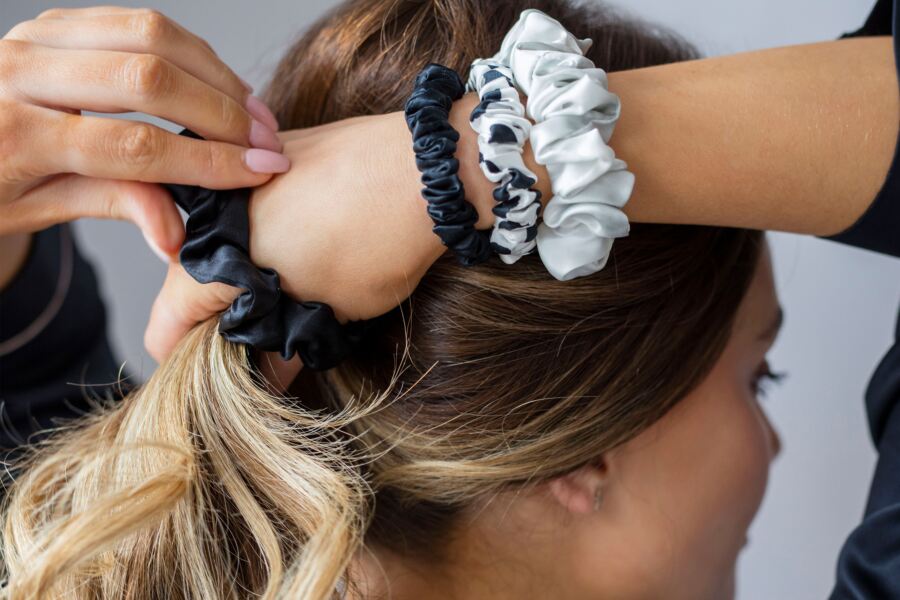Table of Contents
- How to Wash Silk Pillowcase: A Guide
- How Often to Wash Silk Pillowcases
- Our Top Tips for Washing Silk Pillowcases
- Get The Silk Pillow Of Your Dreams At Belledorm
- FAQs
- In Summary
Due to silk's luxurious look and feel, many people presume that they can't wash their silk pillows at home. However, like many other forms of bedding, you can wash silk bedding yourself. It just takes a little bit of know-how that we're here to pass on.
Washing silk at home is relatively straightforward. So long as the silk fabric pillowcases don't have a manufacturer's label stating they should only be dry cleaned, you will be able to care for them properly yourself.
Below we have developed a handy and comprehensive guide on how to keep your silk pillowcases looking and feeling amazing for longer.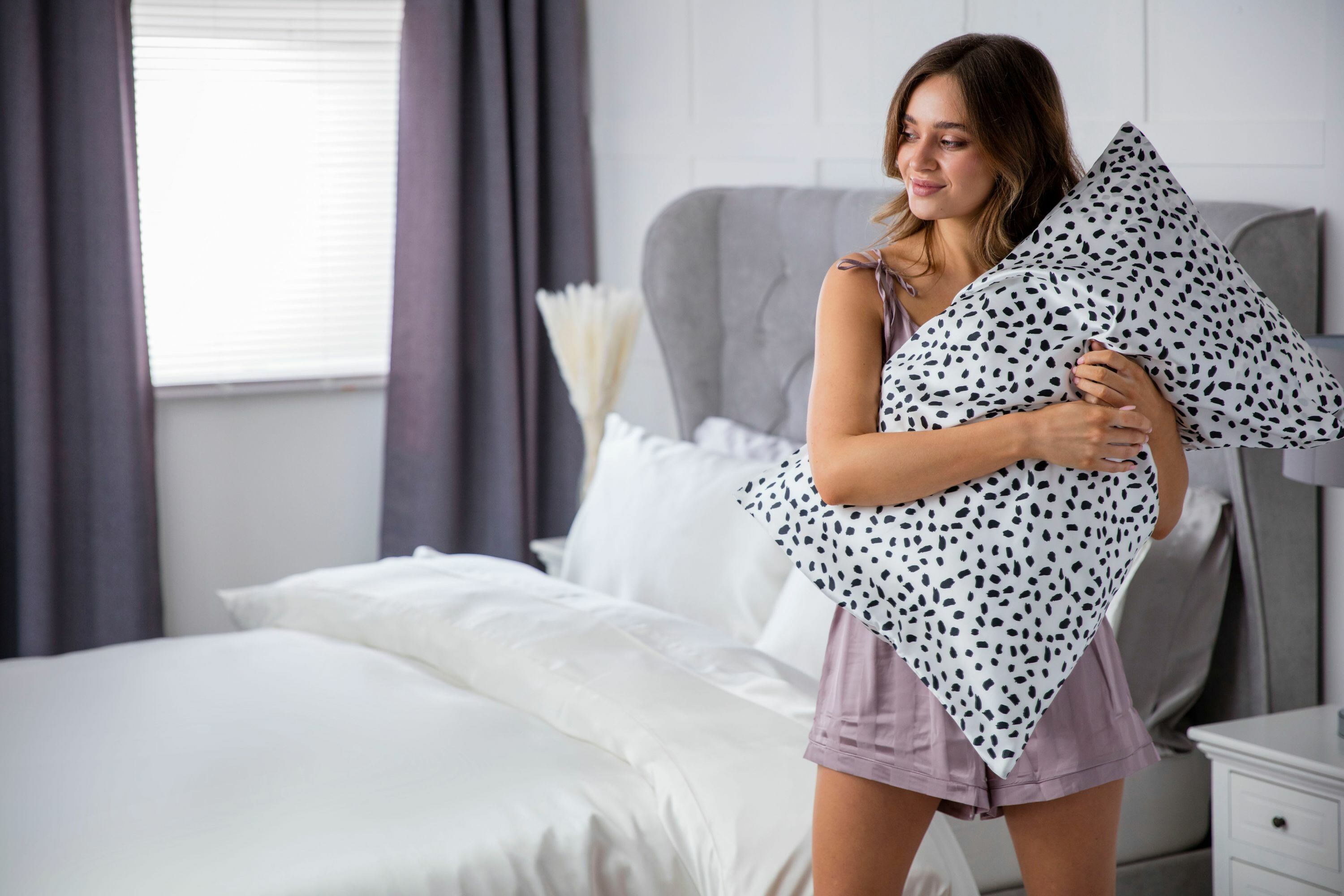
How to Wash Silk Pillowcase: A Guide
Below is our step-by-step guide to washing your silk pillowcases like a pro.
Study the manufacturer's care label
You'd be forgiven for thinking that silk fibres will require dry cleaning. Unless explicitly stated that silk bedding and pillowcases are to be dry cleaned only, they can be safely washed at home. "Dry Clean Only" labels are only usually found on those pillowcases which are adorned with exceptionally delicate beads or stitching.
However, even if the label states that dry cleaning is recommended, you will still be able to adequately wash and dry your silk pillowcase at home.
Items created from silk, including silk sheets, respond well to being washed by hand. Yet, thankfully, many can also be placed into a washing machine for a more thorough wash that's quicker and hassle-free.
Ultimately, the manufacturer's label should be your guide to washing silk pillowcases, and these instructions should always be given priority.
Pay attention to stains
Always be sure to check for staining on your pillows prior to washing them. If you find that your silk pillowcases are soiled or stained with makeup or bodily fluids, they will need to be addressed before washing.
Using a small amount of mild detergent, gently massage it into the affected area. Then, leave it to sit for 15-20 minutes. This could be enough time for the stain to begin to lift gently from the silk.
Deciding on your wash method
You can either choose to wash silk by hand or use a washing machine. If you choose the latter option, ensure you choose a gentle cycle. You should also ensure that the pillowcase is placed into machine-usable mesh bags to protect it.
Deciding what detergent to use can sometimes be a bit tricky with a material such as silk. But, to be on the safe side, opt for a detergent that is specially designed for delicate fabrics.
If you decide to handwash a silk pillowcase, fill your sink with cold water. If you are washing only one pillowcase, add roughly one teaspoon of laundry detergent. If you are washing one item, increase as needed.
Washing the pillowcase
Machine wash: Set your washing machine to a delicate cycle. If your silk pillowcases are especially delicate, you might want to consider having the machine stop prior to the spin cycle. This will mean fewer wrinkles and creases.
Hand washing: When washing by hand, ensure you use a gentle touch. This means you shouldn't twist the material when it's wet. Although silk is a pretty durable material when it's dry, it becomes much more vulnerable to damage when it is wet.
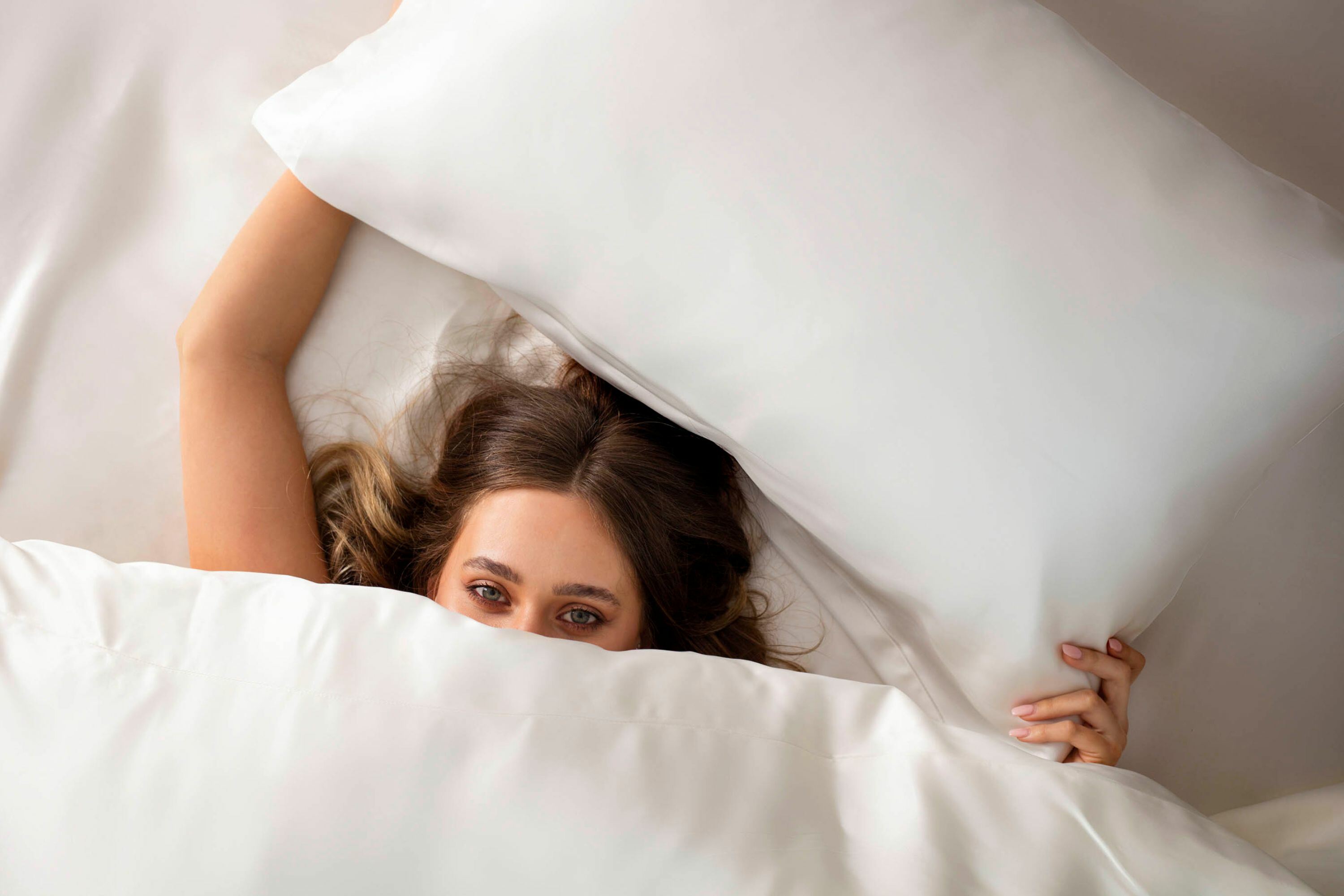
Add vinegar
Machine wash: In place of fabric softener (which won't do silk fabric much good), place around 120 ml of white vinegar into the dispenser where you would normally place the fabric softener when the rinse cycle is in progress. This helps to get rid of any soapy leftovers and leave the material feeling lovely.
Hand washing: Once you have washed the pillowcases, drain out the soapy water and refill with cold water and around 120 ml of white vinegar. Gently mix to release the soap from the silk. Repeat as required.
Drying the pillowcases
The healthiest way to dry your silk pillowcase is to allow it to air dry naturally. This is because high temperatures and silk don't always mix very well. Aim to place them in an area of your home away from sources of direct heat and out of the glare of the sun.
How Often to Wash Silk Pillowcases
Considering we spend up to one-third of our lives in bed means that your pillowcases will have a lot to contend with. That's why it's so important to clean them regularly.
But how often is often?
No matter how hygienic you are, your pillowcases should be washed weekly.
However, if you are unwell and suffering from a cold or virus, you should try to ensure your pillows are washed each day. Similarly, if you suffer from acne, you will benefit from changing your pillowcases more regularly.
Our Top Tips for Washing Silk Pillowcases
Try to avoid washing your pillowcases in your washing machine every time. Silk is much sturdier and more robust than many people imagine, but that doesn't mean washing silk in the machine is the best way every time. With continuous machine washing, the fibres can start to break down, meaning your pillowcases will start to age prematurely and not look their best.
A common mistake when washing silk sheets and pillowcases is to use fabric softener in the belief that it will keep the material soft. In actual fact, softeners often leave a residue on silk, dulling the "silkiness" of the cases.
When you opt to hand wash pillowcases made from silk, be sure not to wring them out. This can, in certain instances, damage the material. To get rid of excess moisture, instead, press the pillowcase against a large towel and then leave it to air dry.
Get The Silk Pillow Of Your Dreams At Belledorm
Here at Belledorm, we know the importance of getting the best night's sleep possible. And thanks to our range of luxury silk pillows, you can. Silk pillows have a unique range of benefits, including:
-
Helping to prevent wrinkles
-
Keeping your skin adequately hydrated
-
Helping you to regulate your body temperature overnight
-
Preventing the spread of facial acne
-
Helping to promote anti-ageing
-
Allowing you a blissful night's sleep on your own little bit of luxury
So, coupled with how easy and straightforward it is to care for silk fibres, isn't it about time you joined the throngs of happy customers that have purchased from our divine selection of silk pillows? Why not check out Belledorm's range of beautifully easy-to-manage silk pillowcases today?
FAQs
Are silk pillowcases easy to care for?
Yes! Not only do these pillows add some opulence and style to your bedding, but they are also mercifully easy to care for. Simply hand wash a silk pillowcase or put on a delicate cycle if you are short of time and then leave it to air dry, if possible. It's that straightforward.
How can I get rid of yellow stains on silk pillowcases?
The first thing to remember is not to use bleach on your pillowcases. This is because it can not only damage the material but it could also lead to your cases becoming even more yellow due to the chlorine.
The best way to help eliminate yellow staining is to soak the pillowcases in cold water alongside one tablespoon of white vinegar. Soak for around 30 minutes prior to washing them as usual. The vinegar will also help to remove any unpleasant odours from the pillows, too.
What's the best way to get rid of wrinkles on silk sheets and pillowcases?
The best way to keep silk fabrics feeling beautifully fresh and looking brand new all over again is to use a steamer. This will allow your sheets and pillowcases to be crease-free and won't damage the fabric.
However, if you don't have a steamer, you can use an iron instead. However, it's important to be cautious when doing s due to the potential damage the hot temperatures can do.
Can enzyme detergent be used to wash silk pillowcases?
No, you should not consider using an enzyme-based product on silk sheets and pillowcases. This is because, over time, it can break down the proteins within the silk fibres.
For this reason, always be sure to choose a detergent that is free from enzymes. Products that are safe to be used will come labelled as "silk wash" or even "wool wash" will be completely safe for your silk items.
In Summary
With a little bit of care, you can easily keep your silk bedding looking and feeling luxurious with a quick wash at home. This will save you lots of time and money, all while ensuring your pillowcases are the star of the show.
As always, the best first step is to check the care label that comes attached to your pillowcases. Unless it explicitly states that you cannot wash silk sheets and pillowcases at home, then it can most certainly be done.
Follow our guide to keeping your silk cases in tip-top condition so you can have the sleep of your dreams!

